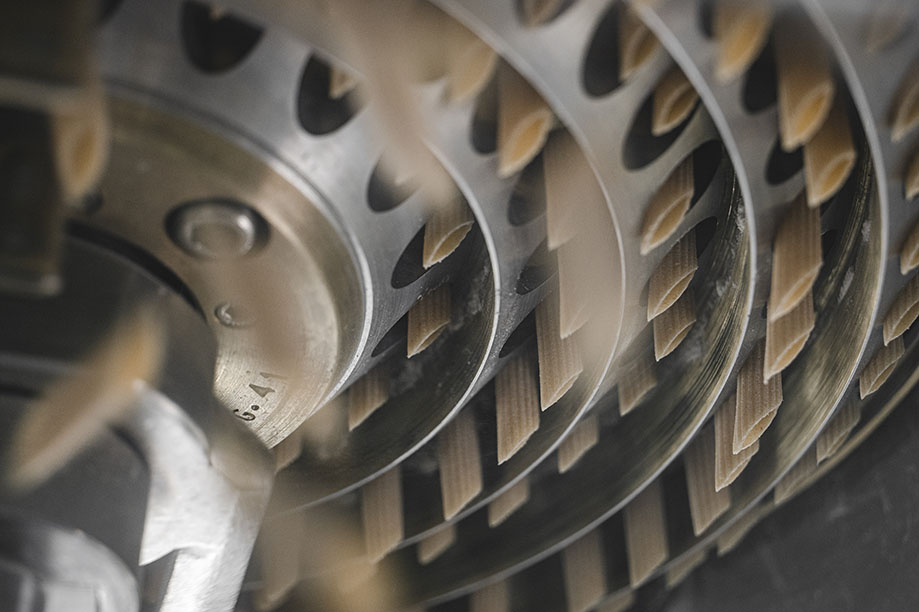About pasta

About pasta
Pasta is undoubtedly one of the most versatile products, from which a wide variety of dishes can be prepared. The complex structure of carbohydrates in pasta helps the human body produce the hormone serotonin, which is “responsible” for good emotions, so we often joke: “pasta = happiness”.
Production
Our pasta is made from hard (durum) or soft wheat, spelt, buckwheat and other flour and water mixtures, which are often supplemented with other products (eggs, spices, etc.). The flour in our mixers is mixed with water and other ingredients until no lumps remain and the surface of the pasta dough becomes homogeneous. The mixed dough is kneaded and rolled to a stiff mass, from which pasta of various configurations can be formed. The presses used in the production process push the highly pressurised dough through the holes of the press matrices – certain molds, on which the shape of the pasta depends (corkscrews, spaghetti, tubes, etc.).

Perseverance
Professionalism
Responsibility
Respect
Teamwork
Pasta made using Teflon molds
Teflon shapes allow us to efficiently and quickly produce large quantities. Pasta transferred through Teflon forms has a smooth, shiny and slippery surface.
Pasta made using bronze molds
According to old production traditions, pasta is made using bronze forms, and it is this technology that gives the products exceptional quality and unique taste properties. The bronze molds scratch the surface of the pasta, making it whitish and porous, that is why such pasta absorbs sauce perfectly.




Nutritional properties of pasta
The variety of pasta in shops is pleasing to the eye, but how does one choose the healthiest and the tastiest? The quality of pasta is determined by the quality of wheat flour and the composition of gluten (wheat protein). Our pasta is made from hand-picked high-quality wheat flour, according to a special technique, maintaining long-standing production traditions and preserving the most valuable nutritional properties.